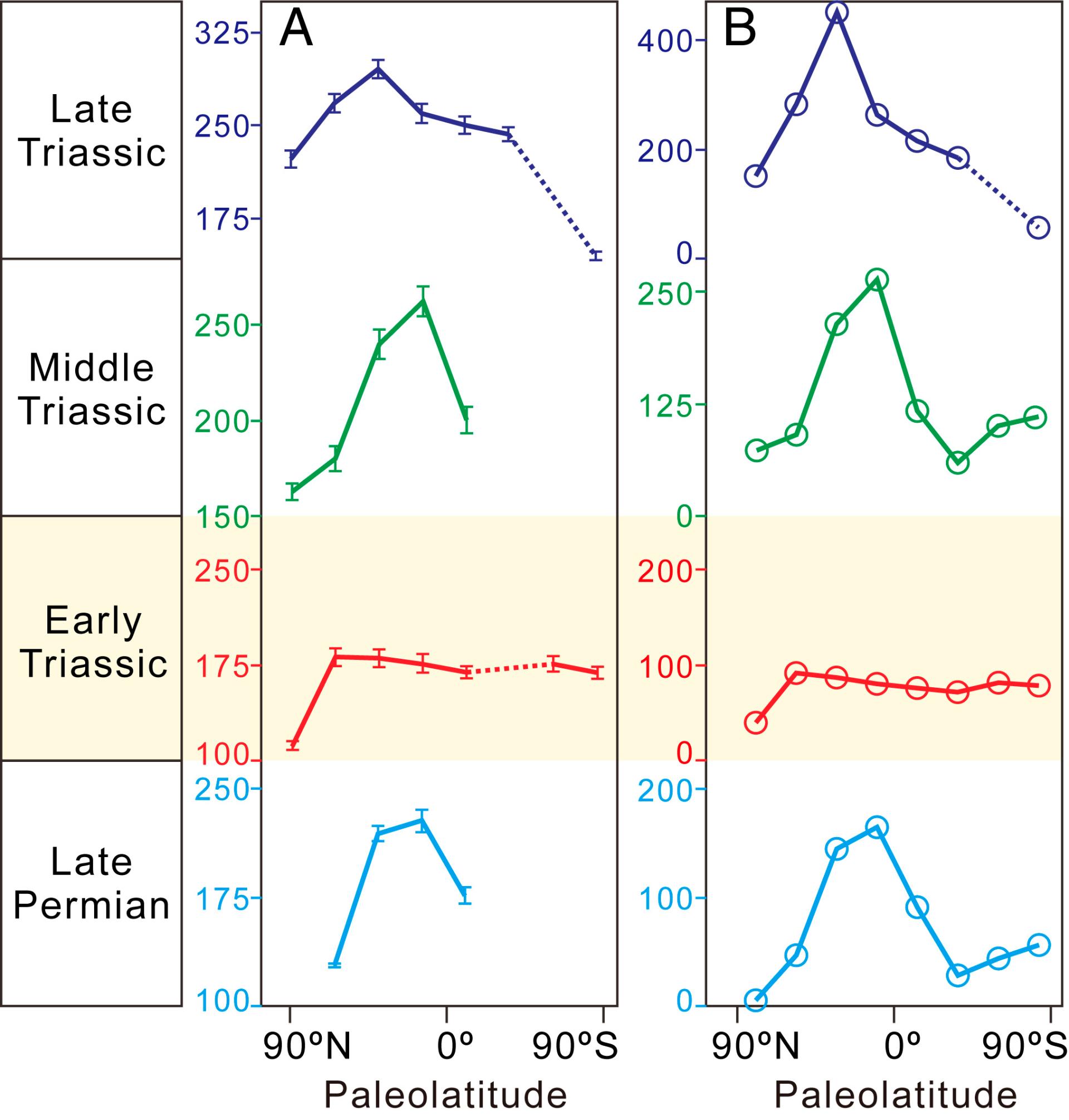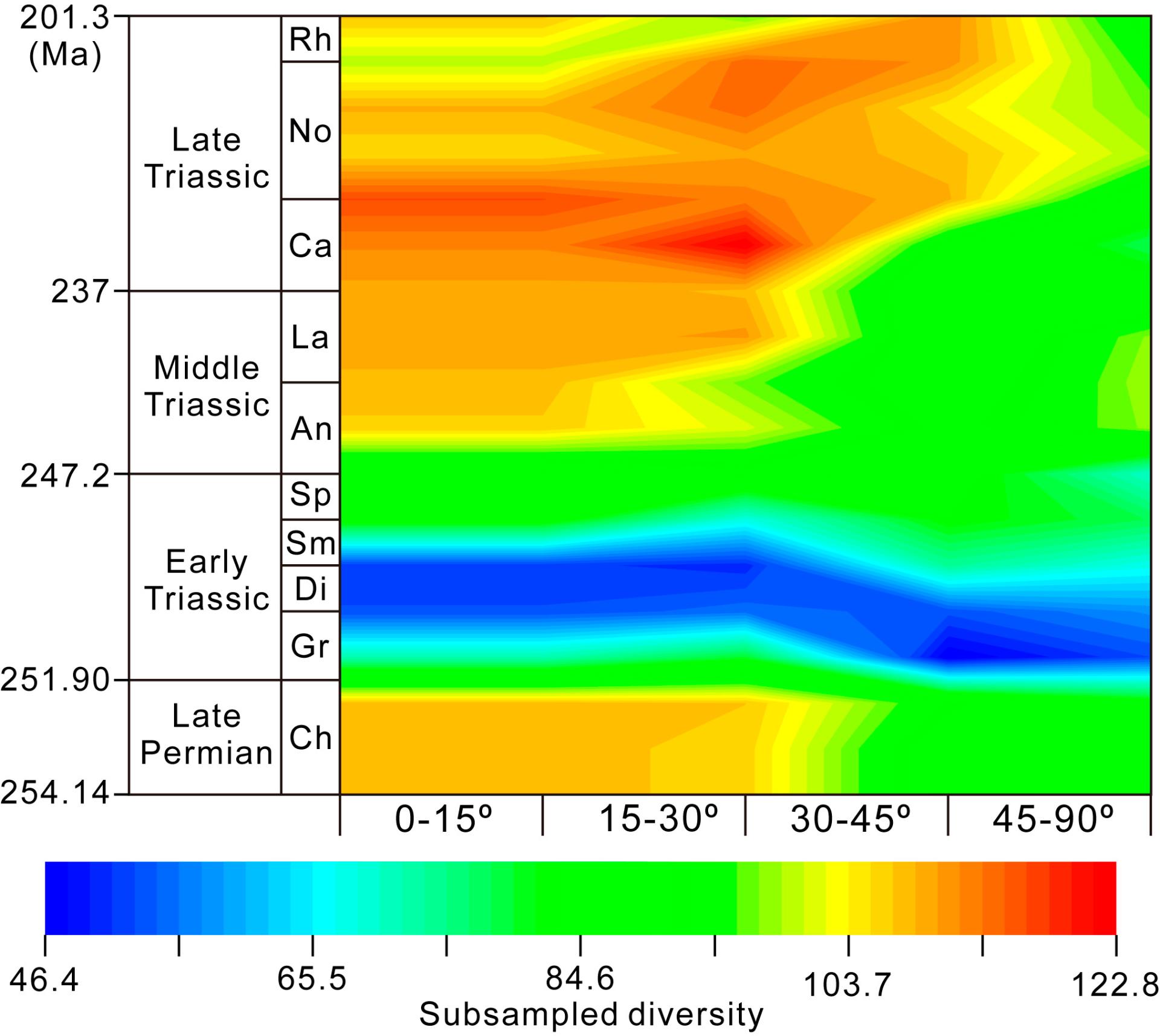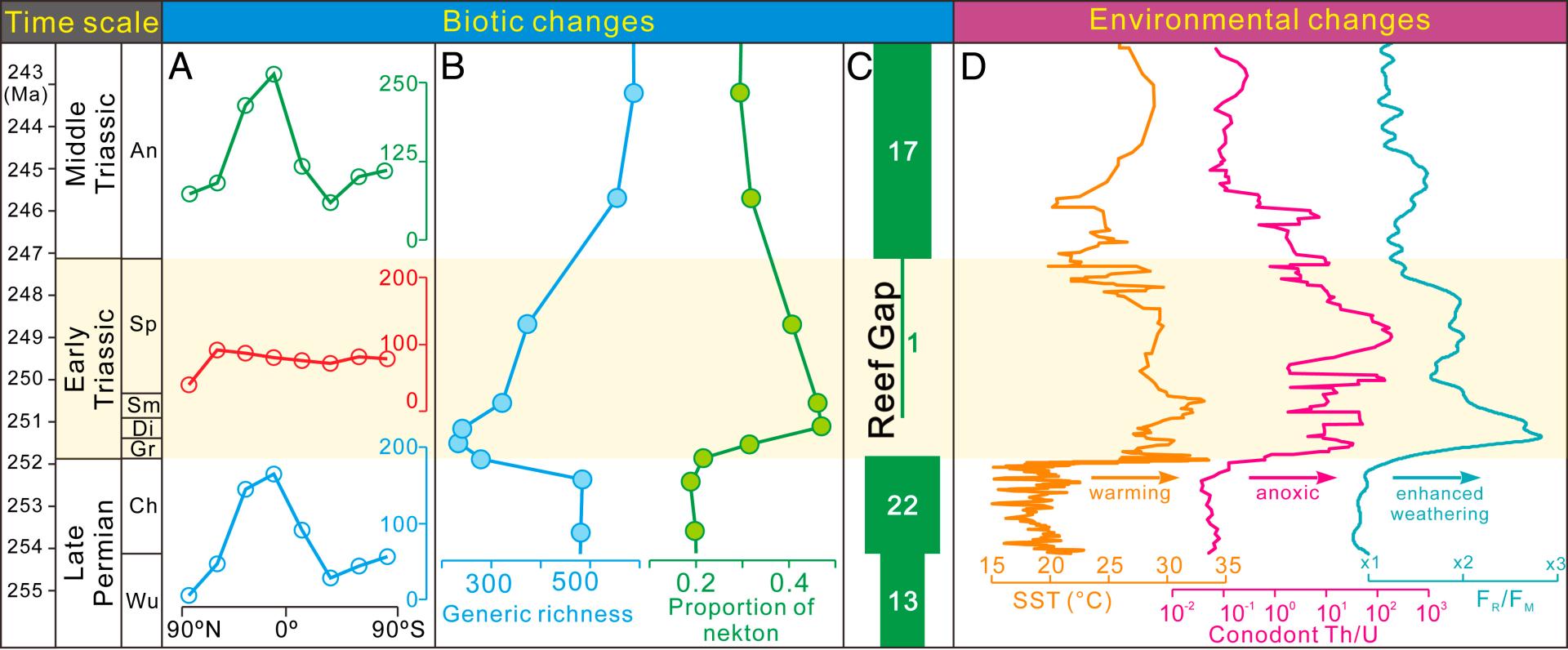Significance
The deep-time dynamics of the latitudinal diversity gradient (LDG), especially through dramatic events like mass extinctions, can provide invaluable insights into the biotic responses to global changes, yet they remain largely underexplored. Our study shows that the shape of marine LDGs changed substantially and rapidly during the Permian–Triassic mass extinction from a modern-like steep LDG to a flat LDG. The flat LDG lasted for ∼5 My and was likely a consequence of the extreme global environment, including extreme warming and ocean anoxia, which ensured harsh conditions prevailing from the tropics to the poles. Our findings highlight the fundamental role of environmental variations in concert with severe biodiversity loss in shaping the first-order biogeographic patterns.
Abstract
The latitudinal diversity gradient (LDG) is recognized as one of the most pervasive, global patterns of present-day biodiversity. However, the controlling mechanisms have proved difficult to identify because many potential drivers covary in space. The geological record presents a unique opportunity for understanding the mechanisms which drive the LDG by providing a direct window to deep-time biogeographic dynamics. Here we used a comprehensive database containing 52,318 occurrences of marine fossils to show that the shape of the LDG changed greatly during the Permian–Triassic mass extinction from showing a significant tropical peak to a flattened LDG. The flat LDG lasted for the entire Early Triassic (∼5 My) before reverting to a modern-like shape in the Middle Triassic. The environmental extremes that prevailed globally, especially the dramatic warming, likely induced selective extinction in low latitudes and accumulation of diversity in high latitudes through origination and poleward migration, which combined together account for the flat LDG of the Early Triassic.

Fig. LDGs for late Permian and Triassic intervals. (A) Subsampled diversity using a quota of 380 occurrences for each time interval. Vertical bar presents the SD. (B) SQS diversity with a quorum level of 0.5. Dashed line represents the discontinuous case.

Fig2. Rarefied genus-level diversity trends related to latitude from the late Permian to the end of the Triassic. Data are standardized by repeatedly subsampling from a randomly generated set until reaching a quota of 136 occurrences in each time bin at each latitudinal interval (SI Appendix, Table S3). Diversities are drawn as a contour map by using Origin Pro-2017 software. Ch, Changhsingian; Gr, Griesbachian; Di, Dienerian; Sm, Smithian; Sp, Spathian; An, Anisian; La, Ladinian; Ca, Carnian; No, Norian; Rh, Rhaetian.

Fig3. Biotic and environmental changes throughout the late Permian to the Middle Triassic. (A) SQS diversities across latitudinal zones. (B) Genus richness and proportion of nekton (23). (C) The number of sites yielding metazoan reefs (50). (D) Sea-surface temperature (SST), ocean redox, and continental weathering. SST values are derived from conodont oxygen isotope data (SI Appendix, Table S6 and Dataset S2). Redox states of seawater are from conodont Th/U ratios (20). Riverine-to-mantle Sr flux ratios (FR/FM) calculated from conodont Sr isotopes reflect continental weathering change (43).
Song, H.*, Huang, S., Jia, E., Dai, X., Wignall, P.B., and Dunhill, A.M., 2020. Flat latitudinal diversity gradient caused by the Permian–Triassic mass extinction. PNAS, www.pnas.org/cgi/doi/10.1073/pnas.1918953117.